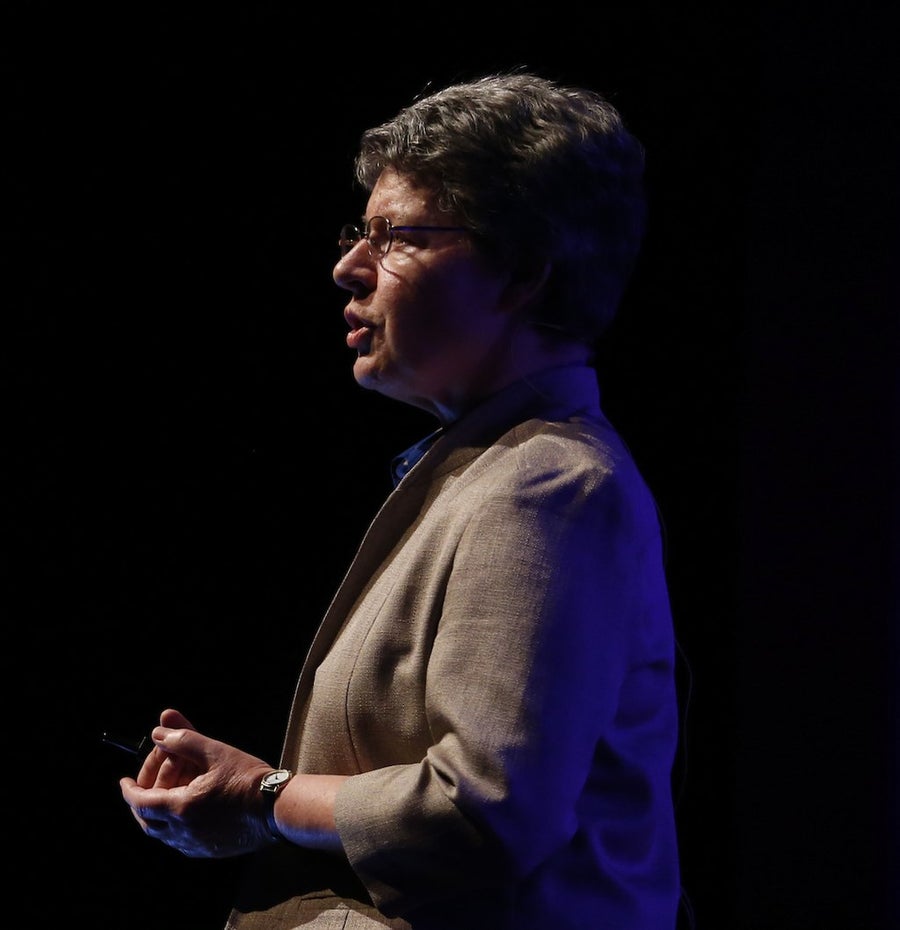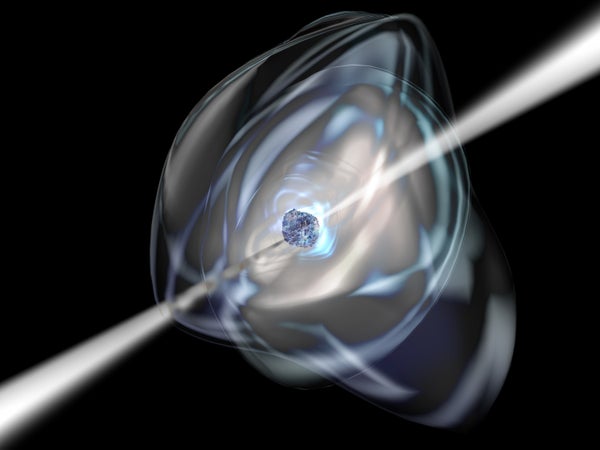Jocelyn Bell Burnell, a visiting professor of astrophysics at the University of Oxford whose work in the 1960s ushered in a new era of astronomy, has received a $3-million Special Breakthrough Prize in Fundamental Physics, the Breakthrough Foundation announced today.
“I am very surprised,” Bell Burnell says, “almost speechless, in fact, which doesn’t often happen to me.” Previous prizewinners include the late physicist Stephen Hawking, the seven lead scientists behind the discovery of the Higgs boson and the entire international team responsible for the direct detection of gravitational waves. Bell Burnell will receive the award at a formal ceremony in November in Silicon Valley.

Jocelyn Bell Burnell. Credit: Conor McCabe Wikimedia (CC BY-SA 4.0)
On supporting science journalism
If you're enjoying this article, consider supporting our award-winning journalism by subscribing. By purchasing a subscription you are helping to ensure the future of impactful stories about the discoveries and ideas shaping our world today.
“Professor Bell Burnell thoroughly deserves this recognition,” said Yuri Milner, the billionaire founder of the Breakthrough Prizes. “Her curiosity, diligent observations and rigorous analysis revealed some of the most interesting and mysterious objects in the universe.”
Just over a half century ago, while a British graduate student at the University of Cambridge, Bell Burnell made a discovery that transformed astronomy: pulsars. A pulsar is a rapidly spinning neutron star, a city-sized collapsed core of a massive sun that is made of degenerate matter and throws off lighthouse-like beams of radio waves. A neutron star represents the most extreme known form of matter—the universe’s last stop before gravity’s overwhelming force creates a black hole—and pulsars, which can spin at roughly a quarter of light-speed, are neutron stars at the outer limits of physical possibility. That spinning—regular as a metronome—makes them potent probes for a wealth of astrophysical phenomena.
“Jocelyn Bell Burnell’s discovery of pulsars will always stand as one of the great surprises in the history of astronomy,” said Edward Witten in a statement. Witten, a physicist at the Institute for Advanced Study, is also chair of the 26-member Selection Committee for Breakthrough’s physics prizes. “Until that moment, no one had any real idea how neutron stars could be observed, if indeed they existed. Suddenly it turned out that nature has provided an incredibly precise way to observe these objects, something that has led to many later advances.”
Working with her adviser, the astronomer Antony Hewish, in 1967 and 1968 Bell Burnell first found these objects as regularly repeating blips against a background of cosmic static. She detected them using a new type of radio telescope she had helped build, based on concepts from another astronomer, Martin Ryle. Bell Burnell’s discovery hinted at the existence of black holes, which at the time had yet to be detected, and pointed the way to stringent new tests of Einstein’s theory of general relativity. Studies of pulsars’ timing ultimately yielded the first direct evidence for gravitational waves and for exoplanets, and scientists have also used their outbursts to map the interstellar medium and to glimpse the exotic states of matter at each neutron star’s heart.
In 1974 Bell Burnell’s discovery netted a Nobel Prize in Physics—but only for Hewish and Ryle. Ever since, her exclusion has been cited as a high-profile example of sexism in astronomy, placing her alongside other famously Nobel-snubbed female astronomers such as the late Vera Rubin—who played a crucial role in discovering dark matter—and Margaret Burbidge, who helped elucidate how chemical elements form in stars. At first, Bell Burnell downplayed the controversy, saying in 1977 Hewish deserved the accolade and that she believed awarding Nobels to mere research students would “demean” the prizes. But today, she admits such statements came from her “precarious” time as a postdoctoral student, when she “was not in a position to rock boats, and in need of support from senior men.”
Now, she says, “I’ve come to realize that if you get a Nobel, you don’t get anything else—people feel they can’t match it, and they probably can’t. Whereas if you don’t get a Nobel, you seem to get everything else, and frankly it’s a lot more fun. Nearly every year there’s some award—and a party.”
Still, for Bell Burnell the fallout from her discovery was bittersweet. She married, and shifted away from studying pulsars as her bond with her husband and their child led her to working part-time in other areas of astronomy such as observing the heavens in gamma rays, x-rays and infrared. “Back then, married women in Britain weren’t expected to work—it was considered shameful,” she says. “It meant the husband couldn’t earn enough, and it was also ‘proven’ that if a mother worked, her children became delinquent. There was no childcare provided, of course. I felt I had no choice—it became a question of where my husband was working, and what astronomical job I could get nearby.”
Along the way, however, she netted numerous accolades and became an influential advocate for equality in astronomy and, more broadly, for women in science. In 2005 Bell Burnell co-founded the Athena SWAN initiative, which accredits universities and colleges for fostering the development of women and minorities, and has served as the first female president of both the Royal Society of Edinburgh and the Institute of Physics (IOP) in London. With the IOP, Bell Burnell says, she plans to use her newfound $3 million to set up scholarships for graduate students from underrepresented groups in physics. “There are lots of people who aren’t very kindly treated by the current system,” she says. “And we’re not fully using the talent we’ve got in the house, quite apart from those we lose because we’re not providing the best kind of work environment for them…. We are becomingmuch more alert, and gradually getting our act together in each of these domains.”
It is still, however, a work in progress, as the Breakthrough Prize itself demonstrates: The prestigious Selection Committee that bestowed the special award on Bell Burnell, it turns out, is all-male and overwhelmingly Caucasian. Even so, she says, her prize shows how far women in science have come in the past half century. “People are paying more attention to the achievements of both women and men. There is still much more to do, but it is much better than it used to be.”
